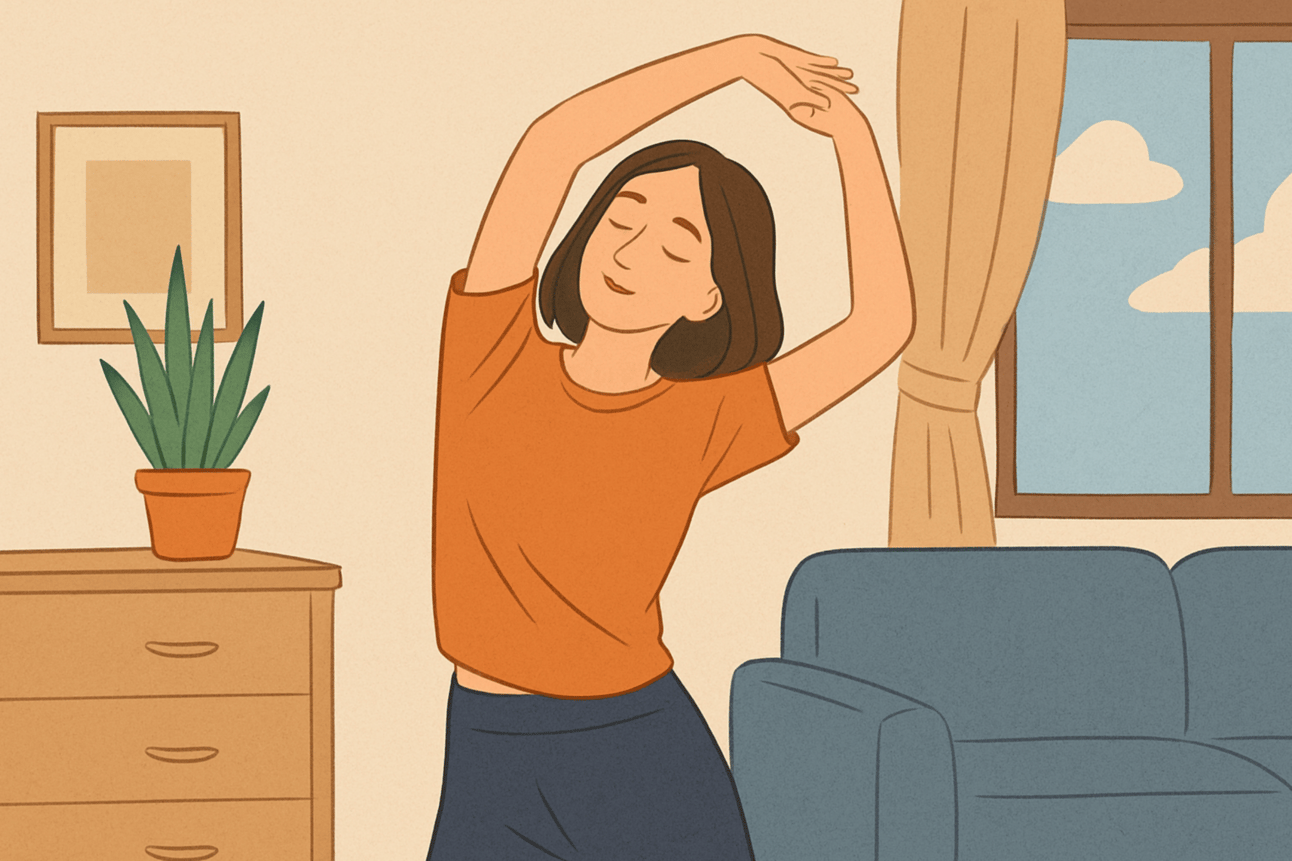- Zen Brain Blueprint
- Posts
- 🧠 The Importance of Movement in the Digital Age
🧠 The Importance of Movement in the Digital Age
Releasing stuck stress, emotions, and tension by moving your body—on purpose more often
Hey, Zen seekers and brain-body optimizers!
Stillness is sacred—but it’s not always the medicine your nervous system needs.
In the Digital Age, we sit more than ever. Long hours at desks, on devices, and under fluorescent lights lock our bodies—and our emotions—into static postures. What doesn’t move… gets stuck.
This includes stress, emotions, pain, and even trauma.
Modern neuroscience and somatic research agree: your body holds on to what you don’t move through.
Let’s explore how strategic movement isn’t just physical—it’s emotional liberation, brain activation, and long-term nervous system balance.

The Science of Emotion, Fascia, and Movement
Your fascia is a connective tissue web that not only holds physical structure but also tension patterns, emotional residue, and trauma imprints.
Prolonged stillness—especially tech-induced—isn’t neutral. It wires in:
Postural collapse → low energy, poor breath capacity
Fascial restriction → emotional rigidity
Reduced vagal tone → less resilience to stress
And emotions? They’re biochemical waves designed to move through the body. If they’re blocked, they stay lodged in your system, causing chronic tightness, restlessness, or emotional flatness.
Science Insight: Research indicates that movement, particularly rhythmic or flow-based movement, activates brain regions associated with emotion regulation, interoception (inner awareness), and even the release of trauma.
Tools to Free Stress, Emotions & Energy
Let’s go beyond "stretching" or "working out"—these practices are designed to release, reset, and rewire.
1. Somatic Shaking (2-5 min)
💥 Shake your hands, arms, legs, and shoulders—like you’re flicking off tension or adrenaline. Add music if helpful.
🧠 Why it works: Mimics mammalian trauma release (as seen in wild animals), downregulates the amygdala, and resets the autonomic nervous system.
2. Spinal Rolls & Joint Flossing
🌀 Slowly roll down through your spine, vertebra by vertebra. Rotate your shoulders, wrists, hips, and neck in fluid patterns.
🧠 Why it works: Mobilizes the central nervous system’s physical highway, increases proprioception, and softens stored tension.
3. Walking Meditations
🚶♂️ Walk slowly, mindfully. Sync breath with steps. Focus on the sensation of being in contact with the ground.
🧠 Why it works: Combines bilateral stimulation (great for calming), vagal activation, and grounded presence.
4. Neuro-Mobility Flows
💫 Try gentle dynamic sequences (think Cat-Cow, spinal waves, hip circles, eye-tracking with head movement).
🧠 Why it works: Reconnects brain-body circuits, boosts neuroplasticity, and unfreezes dissociated stress patterns.

Research Highlights
🔬 Fascia is Emotional
A study published in Frontiers in Psychology found that fascial tightness correlates with emotional suppression and autonomic dysregulation.
🧠 Movement Enhances Mood & Memory
Regular mobility and flow practice increase BDNF (brain-derived neurotrophic factor), improving memory and mood.
🌬 Emotions Are Somatic First
Neuroscientist Antonio Damasio emphasizes that emotions originate in the body before reaching conscious awareness, making body-based processing a crucial aspect.
The Takeaway
Stillness is restorative—but only when it’s earned through intentional movement.
By moving your body on purpose, you:
Clear mental fog
Restore emotional balance
Strengthen the brain-body feedback loop
Reclaim energy trapped in stillness
This week, don’t just sit in meditation—move toward your calm.
Shake. Roll. Walk. Breathe. Reconnect.
Quote of the Week
"The body knows things about which the mind is ignorant." – Jacques Lecoq
Move mindfully, feel freely, and stay Zen, my friends!
